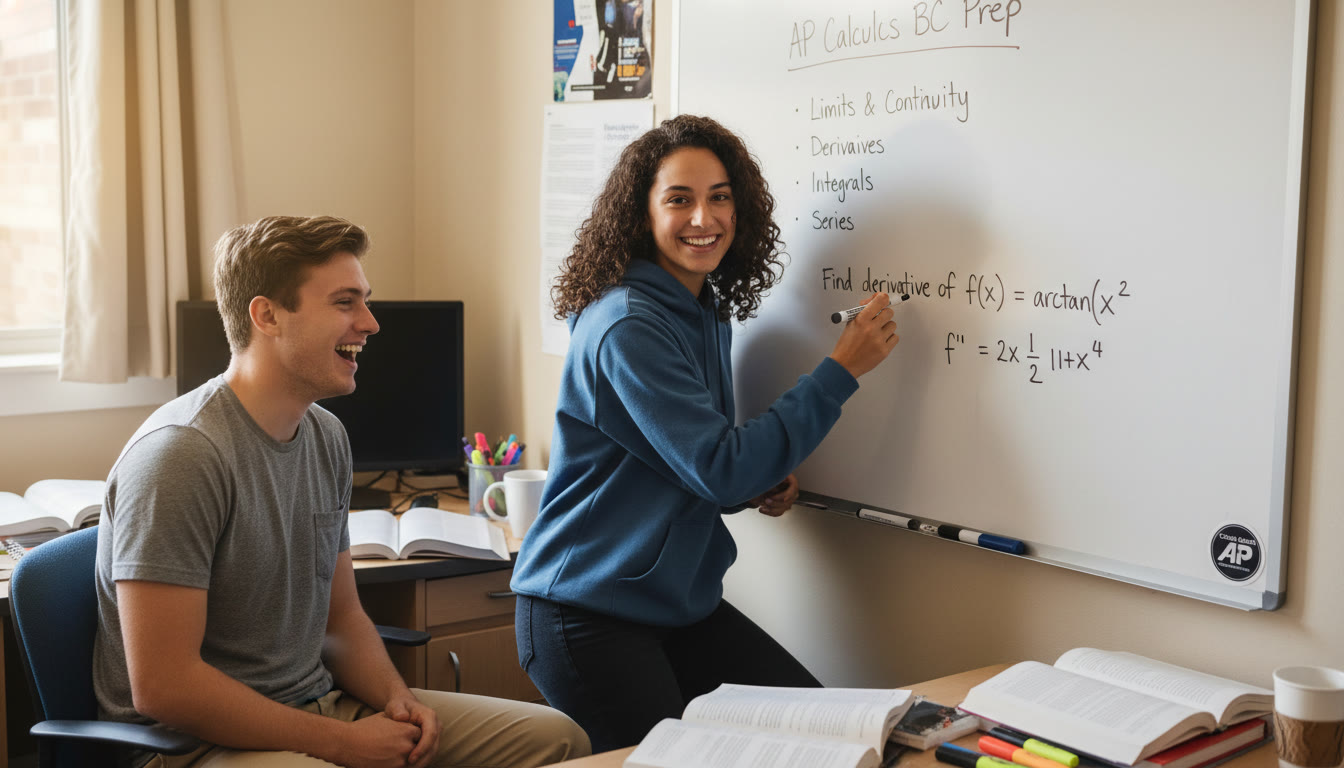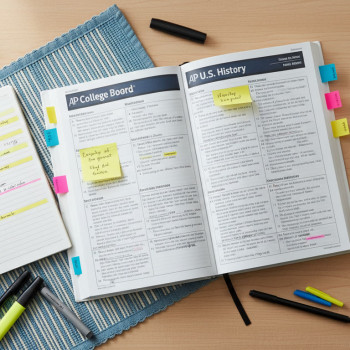When “Free” Costs Time: Trade-offs Parents Should Know About AP Prep
As a parent, you want the best for your child. When your teenager announces they’re taking an AP class, your first instinct might be relief — college credit potential, academic challenge, and a shiny transcript. Then you start to notice all the options for preparing: free practice tests, YouTube videos, teacher handouts, online forums, study apps, and—on the other end of the spectrum—paid tutors and structured programs. Somewhere between the joy of ‘free’ and the promise of expertise lies a key choice: how much of your child’s time, energy, and stress is worth spending to get the score that matters?

Why “Free” Feels So Enticing
Free resources are appealing because they lower monetary barriers. Parents can breathe easier seeing zero-dollar options. Teachers often recommend review sites and open-source practice questions. Schools may host review sessions at no cost. On the surface, free looks efficient: no wallet strain, immediate access, and a feeling of doing something proactive.
But the value of any resource should be measured not only by price, but by the return on two more precious currencies: time and attention. A free resource that requires improbable hours, offers poor alignment to the actual exam, or creates confusion can be more costly in the long run than a paid, targeted intervention.
Three Common Trade-offs When Choosing “Free” AP Prep
- Time vs. Structure: Free resources often lack a structured pathway. That means students must design their own plan — deciding what to study, when to review, and how to gauge progress. Designing an effective plan is itself time-consuming and requires experience.
- Quantity vs. Quality: The internet is full of practice questions, explanations, and video clips. But not all content maps to the latest exam format or the College Board’s learning objectives. Wading through good versus mediocre material eats time without guaranteeing improved outcomes.
- Independence vs. Expert Feedback: Self-study builds independence, which is valuable. But some mistakes—like mislearning a fundamental concept or missing test-taking strategies—can compound. Expert feedback shortens the correction cycle; without it, misconceptions persist.
How to Evaluate Whether “Free” Is Actually Cost-Effective
When you weigh a free option, ask three practical questions:
- How aligned is this material to the College Board’s course framework? The best practice questions and review guides mimic the style, phrasing, and cognitive demand of the AP exam.
- How much guided feedback does my child get? Immediate scoring is useful, but meaningful feedback—why an answer is wrong, how to approach similar problems, and where to prioritize study—saves time later.
- How predictable is the time investment? A resource promising ‘just an hour a day’ may actually require far more when accounting for confused re-reads and inefficient practice.
A Practical Framework to Compare Options
Think of choices along a spectrum: free self-study on one end, highly personalized tutoring on the other. Here’s a simple way to compare them using three axes: alignment, feedback, and time efficiency. Low alignment + low feedback = low ROI regardless of price. Moderate investment in alignment and feedback often outperforms the cheapest option when you factor time saved and retained understanding.
| Option | Typical Cost | Alignment to Exam | Feedback Quality | Time Investment | Best For |
|---|---|---|---|---|---|
| Free Online Practice Sets | $0 | Variable | Low | High (research + correction) | Self-motivated reviewers with strong baseline |
| School-Provided Review Sessions | $0 | Moderate | Moderate (teacher-led) | Moderate (set schedule) | Students seeking guided group review |
| Structured Online Course | $ | High | Low–Moderate | Moderate (curriculum-driven) | Students needing roadmap and pacing |
| Personalized Tutoring | $$$ | High | High (1-on-1 feedback) | Low–Moderate (targeted hours) | Students needing rapid improvement or confidence |
Use this table as a diagnostic. If your child is already near mastery of content, high-value free resources may suffice. If they need to close a score gap, especially in a short time window, targeted investment often yields better time-to-score outcomes.
Real-World Examples: Where Time Adds Up
Here are three realistic scenarios that show how the “free” choice can cost more in time and stress than expected.
Scenario 1: The Endless Video Rabbit Hole
Jamie watches dozens of free videos to prep for AP Biology. Each video explains concepts well, but they vary in approach and depth. Jamie spends time piecing together notes and then misses a pattern in free-response questions because nobody corrected a persistent misconception about data interpretation. Total time spent: weeks of scattered study with little targeted practice.
Scenario 2: The Overconfident Baseline
Rosa takes a free practice test and scores better than she expected on multiple-choice, so she skips focused review. On test day, the free-response section reveals gaps in argument construction—an area the free materials didn’t address. She loses points that are difficult to regain with last-minute study.
Scenario 3: The Parent as Coach
Many parents become de facto tutors. It can work—especially if you have subject knowledge—but it often stretches family time and emotional energy. If the parent has to learn pedagogy and recent exam formats while juggling work, the cost in time and stress can be high. This is where targeted expert help can be more efficient and kinder to family dynamics.
When Free Makes Sense—and How to Make It Work
“Free” isn’t inherently bad. In fact, it’s a crucial part of many successful study plans. The difference is intentionality. Here’s how to make low-cost or free prep truly effective.
1. Use Free Resources That Mirror the Exam
- Choose practice sets that follow the College Board’s format: question style, time pressure, and scoring rubrics.
- Limit the sources to a handful of high-quality providers to avoid conflicting instruction.
2. Build a Time-Budgeted Plan
Treat study time like a household budget. Allocate hours to high-leverage activities: targeted practice, timed sections, and review of incorrect answers. Avoid open-ended tasks that expand to fill available time.
3. Combine Free with Targeted Paid Help
A hybrid approach often gives the best return. Let free resources provide breadth — videos, practice questions, and concept reviews — while occasional 1-on-1 sessions lock in skill, correct misconceptions, and create personalized strategies. Many families find that a few expert sessions reduce total study hours and raise scores more efficiently than purely free study.
4. Prioritize Feedback Over Hours
It’s not how long your child studies; it’s how effectively they spend that time. Detailed feedback on a few practice essays or problem sets is more valuable than mindless repetition of thousands of weak questions.
How to Spot Hidden Costs in “Free” Options
Hidden costs aren’t always money. Watch for these red flags:
- Unclear scope: Resources that don’t state what they cover force students to guess whether they’re finished.
- Outdated formats: Some older materials don’t match current exam emphasis or question types.
- Lack of scoring rubrics: Without rubrics, students can’t measure progress or know how graders evaluate responses.
- Time-sink tasks: Materials that are interesting but not high-signal (e.g., repetitive trivia) steal focus.
Quick Checklist Before Committing to Free Resources
- Does it align with the current AP course framework?
- Is there a way to get targeted feedback?
- Will it fit into a realistic, time-limited study plan?
- Can progress be measured quantitatively (scored practice tests, rubrics)?
Why Personalized Tutoring Often Wins the Time Battle
Personalized tutoring compresses the learning curve. Here’s how:
- 1-on-1 diagnosis: An expert quickly pinpoints misconceptions and skill gaps, so students stop studying what they already know and focus on what matters.
- Tailored study plans: Sessions are designed around a student’s schedule, strengths, and deadlines — saving weeks that would otherwise be lost to trial and error.
- Practice with feedback: Tutors provide immediate, explainable corrections that prevent the fossilization of errors.
- Motivation and accountability: Regular, short sessions reduce procrastination and keep momentum.
For families concerned about time, personalized tutoring can be an investment that returns hours — and often points — back to your child.
For example, Sparkl’s personalized tutoring model blends 1-on-1 guidance with tailored study plans and AI-driven insights to focus effort where it matters most. That kind of targeted support is especially helpful when the clock is ticking and the goal is measurable score improvement.

Budget-Friendly Hybrid Strategies That Work
If you’d like to preserve savings without sacrificing outcomes, try these hybrid combos:
- Free grouped lessons + monthly 1-on-1 check-ins. Use free videos for content delivery; book an expert session every 2–4 weeks to correct course.
- Timed, free practice tests + paid essay grading. Free tests help with pacing; paid rubrics and feedback fix high-value errors.
- Peer study groups + expert strategy session. Peers reinforce practice; an expert introduces exam strategies and resolves tough problems.
Practical Action Plan for Parents
Here’s a step-by-step short plan you can start today.
- Week 1 — Baseline: Have your child take one full, timed practice test to identify strengths and weaknesses. Score it using official rubrics where possible.
- Week 2 — Target: Prioritize three weak areas. Replace unfocused hours with short, targeted sessions aimed at those topics.
- Week 3 — Feedback Loop: Schedule at least one expert session (could be a paid tutor) to review progress and adjust the plan.
- Ongoing — Monitor: Use periodic timed practice tests to check progress. If score improvements stall, increase frequency of expert feedback rather than adding more hours alone.
How to Talk to Your Teen About Trade-offs
Conversations about study choices can become emotional. Focus on goals, not guilt. Ask open questions: “What are you trying to achieve in AP Physics?” and “How much time are you willing to commit each week?” Offer options: hybrid help, concentrated tutoring for a few weeks, or a free-only plan with a clear benchmark for when to upgrade.
Final Thoughts: Time Is the Real Currency
Free resources are a powerful tool when used intentionally. But they’re not free if they cost weeks of confused study, lost confidence, or missed score goals. As a parent, your role is to help your child invest time where it will earn the highest return. That might mean starting with free materials for breadth and adding expert, personalized guidance for depth.
When time is tight, targeted help — like a few sessions of personalized tutoring that include a clear study plan and effective feedback — often produces better outcomes than months of unfocused ‘free’ study. Consider your family’s schedule, your child’s learning style, and the measurable goals for the AP exam. With a clear plan and the right mix of resources, you can turn the promise of ‘free’ into a truly efficient path to success.
Parting Tip
Don’t let the allure of zero-dollar options replace a thoughtful strategy. The smartest choice isn’t always the cheapest — it’s the one that respectfully values your child’s time, keeps stress manageable, and gets you to the score you’re aiming for.
And if you want to discuss a personalized plan that fits your budget and timeline, consider testing a short block of expert sessions to see how quickly they accelerate progress. For many families, the time saved and confidence gained make it a small price to pay for a big payoff.




















No Comments
Leave a comment Cancel